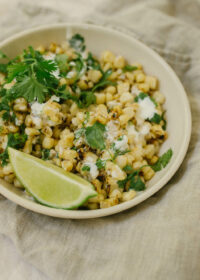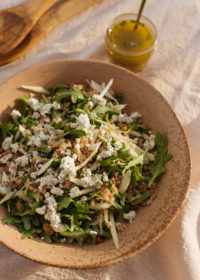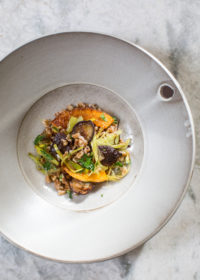Recipes: Radish & Hemp Seed Tabbouleh






Nutritional Profile: Hemp Seeds
- A high protein seed containing all nine of the essential amino acids
- Nature’s highest botanical source of essential fatty acid, with more essential fatty acid than flax or any other nut or seed oil
- A perfect 3:1 ratio of Omega-6 Linoleic Acid and Omega-3 Linolenic Acid which is good for cardiovascular health and general strengthening of the immune system
- A rich source of phytonutrients, the disease-protective element of plants with benefits protecting your immunity, bloodstream, tissues, cells, skin, organs and mitochondria
- The richest known source of polyunsaturated essential fatty acids
- Hemp does not contain phytic acid, the chemical that inhibits nutrient absorption in most seeds and nuts unless soaked, making this seed easy to digest and readily obtain its nutrients
I also substituted the tomato with red radish, since tomatoes are nightshades and have been known to cause inflammation. And a note on the alliums – raw onions and I just don’t get along, so I left it out of this recipe and used garlic instead. However, if you love them feel free to add diced onions into this mix.


1 cucumber, peeled & diced
4 radishes, diced
1 bunch parsley, finely chopped
1 cup mint leaves, finely chopped
2 cloves garlic, minced or grated
½ cup hulled hemp seeds
¼ cup olive oil
½ tsp Himalayan pink salt (or sea salt of your choice)
juice of 2 lemons
Peel and halve your cucumber lengthwise, then use a spoon to scrape seeds from your cucumber. Cut into lengthwise strips, then dice cucumber into small cubes. Place into a large bowl, then add in the remaining chopped ingredients. Toss with olive oil, lemon juice and salt. Grind in fresh pepper to taste, add more salt if desired.
Serves 4
Note: While cooling cucumbers and salads in general are good for balancing pitta, radishes can have a slightly heating effect. Omit the radishes from this recipe if needed.
 [wpmenucart]
[wpmenucart]



I just made this the other night. Forgot the garlic and it still turned out amazing! Thanks, you are an inspiration!
Thank you, Yvonne! I’m so glad you liked it. Keep in touch with your kitchen adventures, I always love to hear how things go!
[…] in a savory recipe. This recipe ties together a series of posts I did a while back. Remember that radish & hemp seed tabbouleh and the roasted red beet hummus? These two piled into this falafel wrap have become one of my […]
[…] roasted beets provide a healthy boost of digestible fiber, iron and Vitamin C. Pair it with some tabbouleh and falafel wraps, or always keep it around the house for a quick afternoon snack with some celery […]